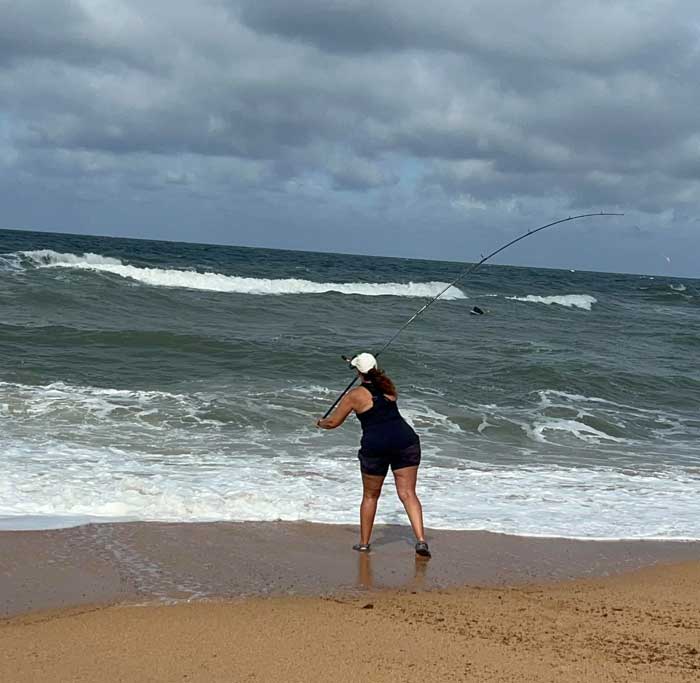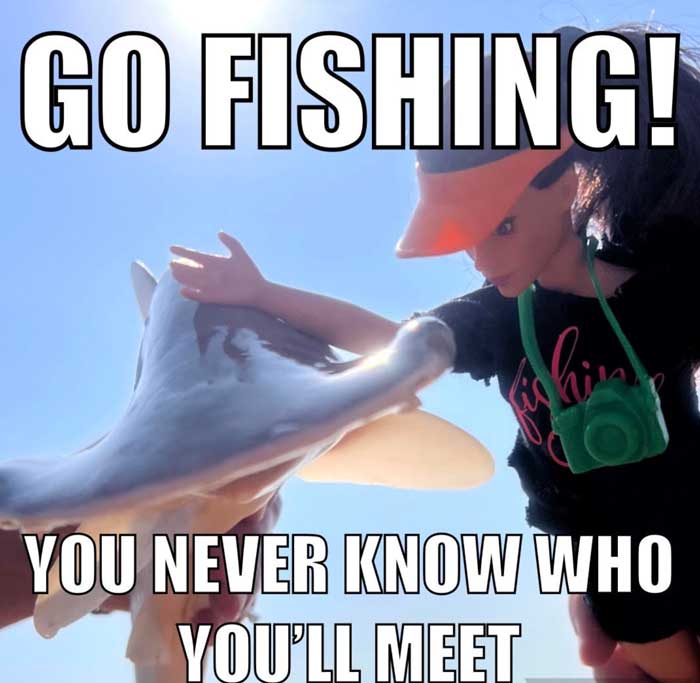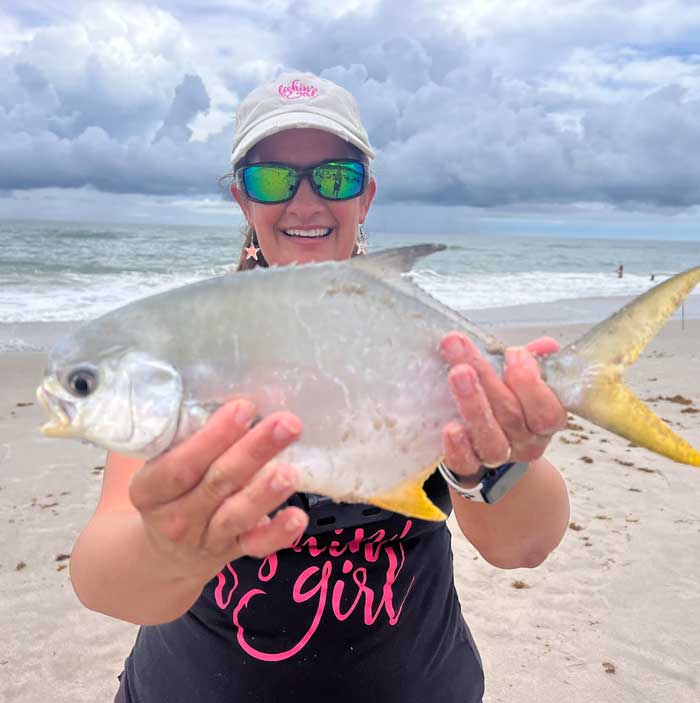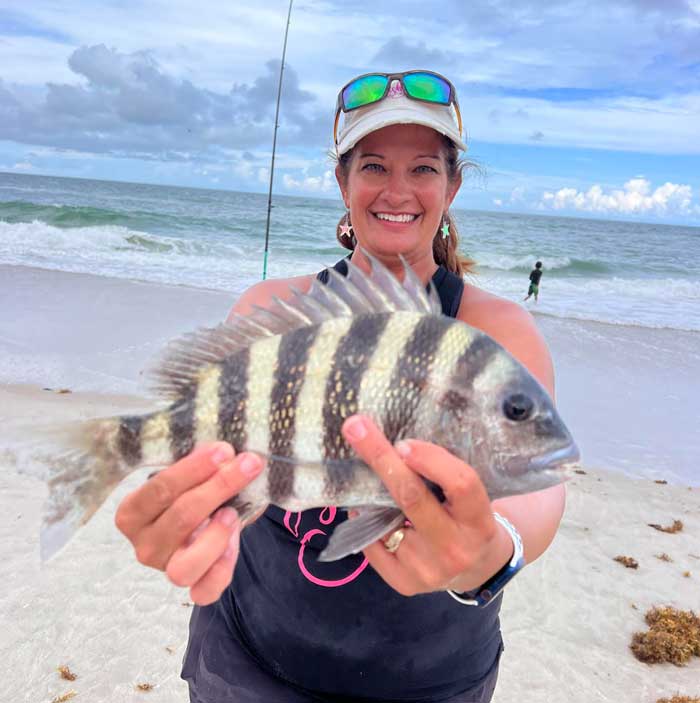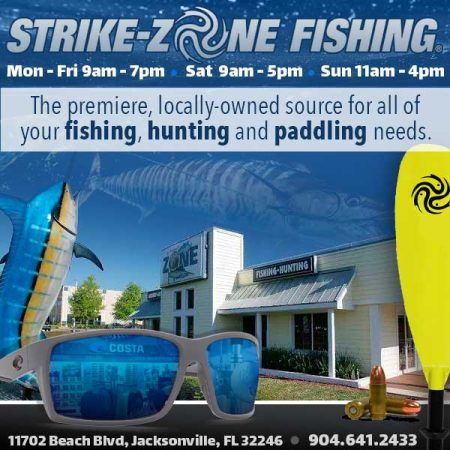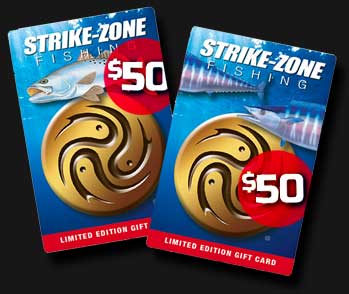- This topic has 1 reply, 1 voice, and was last updated 1 year, 7 months ago by
brackbeard.
content-single-topic.php
Kicking Off Summer Surf Fishing in NE Florida
Kicking Off Summer Surf Fishing in NE Florida
loop-replies.php
-
AuthorPosts
-
-
loop-single-reply.php
June 4, 2023 at 4:23 pmNow that it’s June, summer is pretty much upon us, which will have several impacts on local surf fishing, which we will get into shortly. Our pompano run was interrupted by almost a weeklong series of storms, wind, and massive amounts of seaweed that progressively moved into our area. I’m hoping a few pomps are still hanging around, but reports have been coming in of big pompano being caught in the Carolinas, which usually indicates that the bulk of our pompano run is over.
Surf fishing in NE Florida has been difficult the last few weeks for those of us who have braved the seaweed to see what we can catch. I don’t know how long it will hang around, but I hope it will be phasing out soon. These tips and techniques below should work in situations where the seaweed is not prevalent, so if you are still dealing with seaweed, you may have to alter your strategy or watch the reports to see what beaches are not being affected and go there. Let’s get right into it!
Bait
I have finally been finding sandfleas! And whole colonies of them. I will start bringing my rake out with me. If you see a colony and you don’t have a rake, here is how you can collect some. When I see a colony, I step up carefully parallel to it, NOT behind it, about 5-10 feet away (they can feel the vibrations of your footsteps and they will know if you are hovering in behind of the colony by the way the water washes over them and they will move). I will wait for a good enough break in the waves so that I can run in and scoop a bunch of sand with both hands in the middle of where I am seeing their antennae disturbing the surface of the sand, then I walk up to where the sand is dry and I throw the sand down and start collecting the fleas. Some will start to scurry away, and some will play dead, so I run my hand all through the sand to make sure I have gotten them all before repeating the process. You may only get one good change per colony this way because they move quickly once their area has been disturbed. I used this method recently and had a few dozen fleas in a short time.
It’s always a good idea to have live bait of some sort around. Some bait shops will carry live croaker for the snook or tarpon, or mud minnows and other smaller live bait if you can’t find sand fleas, fiddler crabs or mullet on your own. If the tackle shops don’t carry blue crab (great to use for pompano and redfish), try your local crab house or fish market. I haven’t personally seen any mullet running in the surf, but I know they are out there just a bit further because there have been tarpon running in the surf. It is really cool to watch them jumping as they chase their prey.
I always have shrimp of some sort with me. If I can’t make it to the bait shop, I have salted shrimp that I make from the leftover shrimp from previous trips so I I’m not wasting money throwing away bait. And of course, a staple in my tackle bag is synthetic bait like Fishbites. That pink shrimp is still the flavor/color of choice, and we’ve been catching many different species on it.
Weather and Water Temps
Now that summer is about here, water temperatures across Jacksonville and the whole NE Florida coast have hit the low 80s, which is another indicator that the pompano are making their way north. Remember that fish do not have a way to control their internal body temperature like warm-blooded animals can, so they must go where they are comfortable. I encourage you to study fish species and what water temperatures they can be found in so you know what species to target when you head to the beach. If not, you could be targeting pompano in the heat of summer and wondering why you can’t seem to catch any. It will save you a lot of heartache!
When the water gets into the 80s on the beach, you can expect to be catching an occasional pompano (smaller ones stay around all year and are considered residential pompano), ladyfish, Spanish mackerel, seatrout, redfish, black drum, snook or tarpon (with the right bait and location and if they are running closer to the shore), and of course there are always going to be whiting, croaker, Jack crevalle, sharks, stingray, sailcats, and hardhead catfish around to catch.
We are on the cusp of hurricane season, so make sure to keep an eye on the weather forecasts for upcoming storms. If you are able to fish safely before a storm gets too close, that could be great fishing, as the fish get all fired up before a storm, but make sure you are staying safe and have enough time to evacuate or batten down the hatches if needed. We are also seeing an increase in thunderstorms, so make sure you are keeping an eye on the radar while you are out fishing. Those storms can pop up quickly, and it’s no fun to get caught in lighting storms or hail while on the beach. My biggest problem is that I don’t pack up soon enough to stay ahead of the storm and I normally get drenched on the way back to the car.
June Surf Fishing Strategy
If you’ve not thrown lures in the surf before, summer is a great time to experiment with it! With fast-moving predator fish like Spanish mackerel, seatrout, and others roaming the surf, throwing a Gotcha plug, a 1-2 oz. spoon, or an ES lure can get you hooked up with a nice fight with some great fish. Other great lures to use are the Fishbites fight club paddletail or curly-tail lures on a ¼ or ½ oz. jig head. I have a 8’6” Ninja Dagger from Ninja Tackle spooled up with super slick power pro braid that I keep handy in my cart if conditions look right for throwing lures. I am always amazed how far I can cast a lure with that setup. I try to fan out over a whole area before moving to another zone if I’m not getting strikes.
With the summer heat coming on and vacationers flooding our beaches, your best bet to get on the fish will be getting out early morning, before the sun comes up if possible, and leaving before the beach gets too crowded. When the sun comes up and shines across the top of the water, fish tend to be more active and then they become more lethargic and move to deeper waters later in the day as it gets hot. I would rather be fishing early to avoid getting dehydrated or having heatstroke, as I get really busy while I’m fishing and tend to not drink a lot of fluids. I always have electrolyte packets to put in my water for quick hydration and something to eat if needed. Another reminder is to reapply sunscreen if you are going to be out more than a few hours in the sun or wear a UV protectant shirt/neck garter to avoid bad burns. You are in this for the long haul, so take care of yourself!
Thanks so much for reading and I hope that it helps! Tight lines!
Cathy Sanders is the founder of Fishin' Girl, LLC and is dedicated to gathering women who love fishing and want to enjoy it together. Call to book a trip, or visit Fishin' Girl on the web.
To respond to this post, login or register here.
loop-single-reply.php
1 year, 7 months agoI always enjoy your reports, thanks, Cathy! I’d also add a tip to avoid the crowds — if you have 4WD, use it. Amelia Island State Park is beautiful and can’t be accessed without it. On that note, if you got a whole empty beach, utilize the space without crowding your fellow anglers! The rock jetty edges are overrated, anyway!
AuthorPostsViewing 1 reply thread
-

